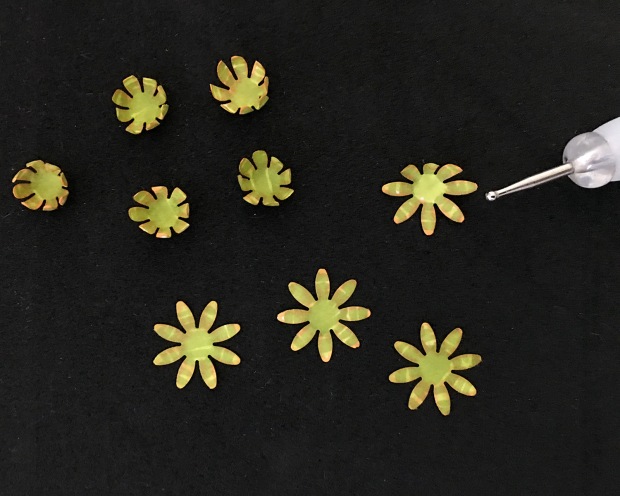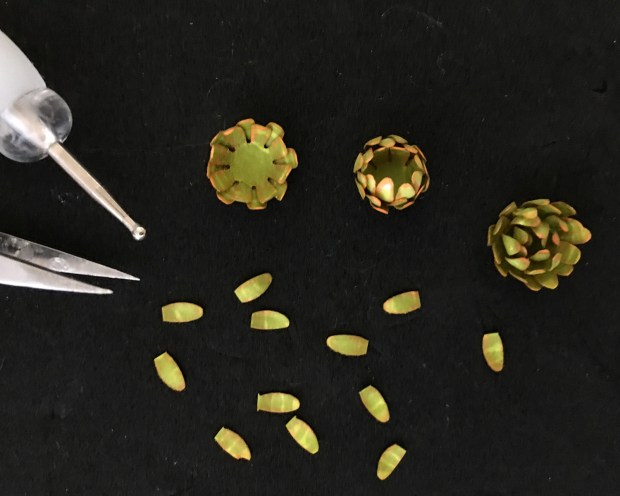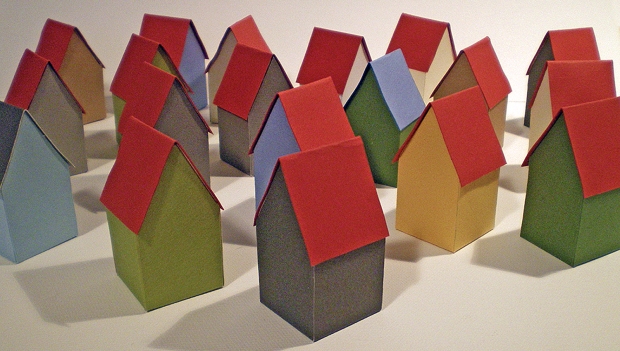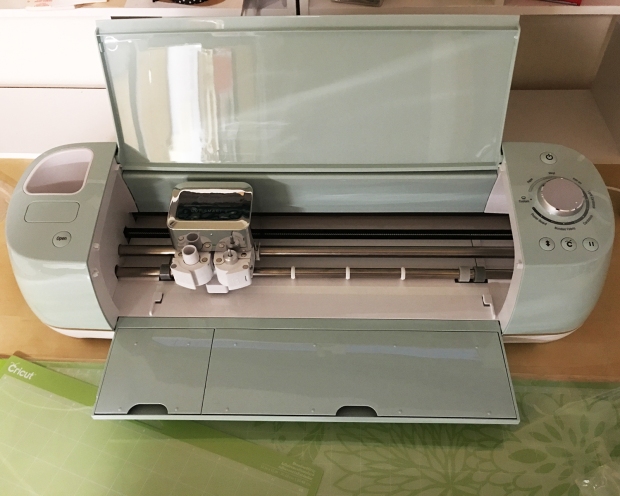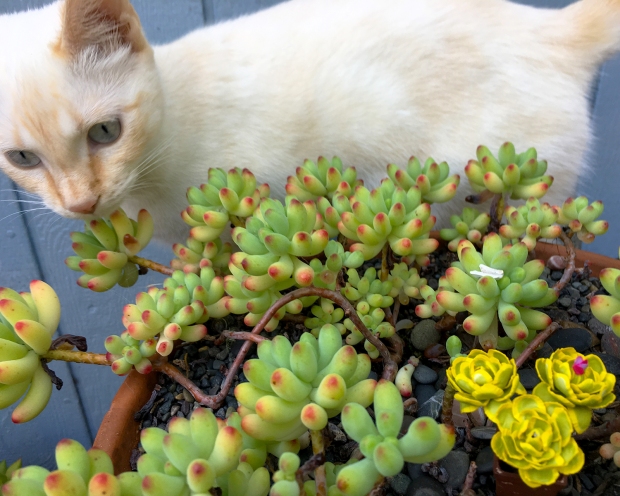V is for Vagary. Fluctuation, variation, quirk, peculiarity, oddity, eccentricity, unpredictability, caprice, foible, whim, whimsy, fancy.
I can’t think of a better word, or set of synonyms, to describe the new 1:12 scale echeveria kit available now over at MMS+S. There are no fewer than five leaf sizes and shapes that combine to make three sizes of a charming pointy-leaf echeveria. I’ve redesigned the build method, too, to start on a fine paper-wrapped stem wire (included in the kit), which is perfect for armatures (gnarly-armed structures) and general ease of shaping the plants.
Here is a bushel basket of prototypes, using both of the base colors — white or apple green — colored with alcohol-based markers. (If you want true reds and yellows — or blues and purples — order the white stock. If you’re good with more muted tones and want to spend less time coloring, choose the green :)
Possibilities of color combinations are endless (and fun).
This is a versatile kit, and a form to make a succulent wreath is available soon!
Let Scarlett’s tail and rabbit feet, seen here in complete repose, be your inspiration.
I recently re-found this unfinished Henri Rousseau-inspired collage panel, and glued it to the side back of the Modern Miniature Succulents + Sundries set.
The MMS+S set is in disarray, like many aspects of my life, but potentially still functional.
Zoom out now, please, to 1:1. The former owners of our house built this charming, funky wave-topped gate (seen here from the back). But, inexplicably, they painted the front of it the same dispirited brown as the rest of the decks, and completely ignored the back. For four years, it has *nagged* at me.
Yay go me. Here it is finished in four shades, by the light of the silvery security beacon.
Albie and I survey the change. You can just see that sad brown deck color peeking out under cat and mat.
This is the old hardware, atop the treacherous birdbath pedestel, for those of you/us interested in these things.
And finally. Keli and I have been challenging ourselves to … not let the bastards drag you down draw a random thing and post it on Instagram, until, for each of us, momentous events transpire. (For me, that’s undergoing replacement surgery of both hips, on 01 October, 2018.) I have chosen Crayola and ink as my drawing medium. We are #messy_k_enge and #curlymuenich, if you care to follow along (+also under our regular names @iseecerulean and @nancy_k_enge). We are expecting phat coffee table art book publishing contracts to swamp our respective agents.
How could they not?













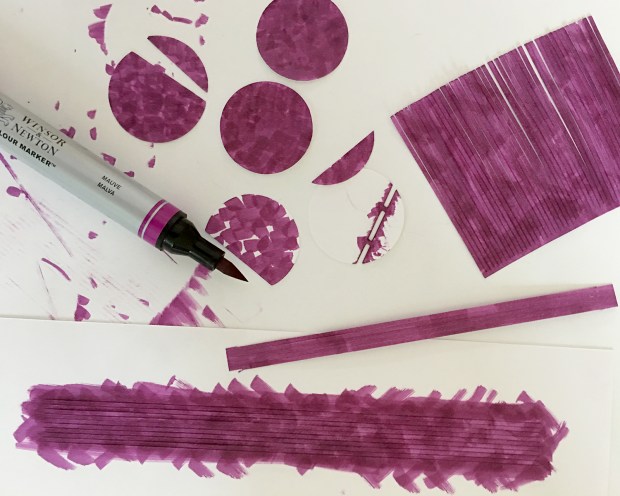
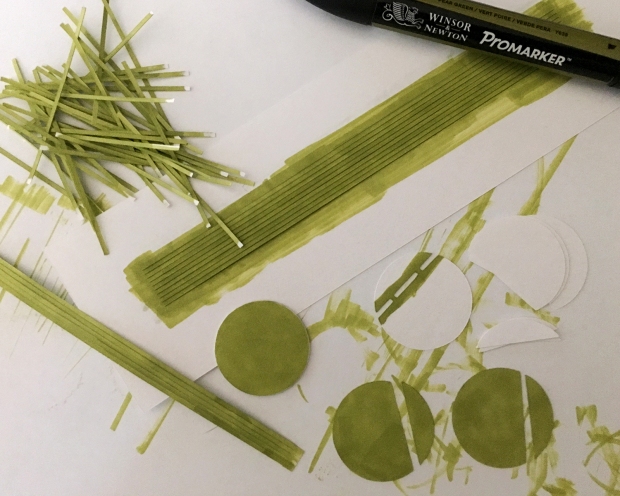
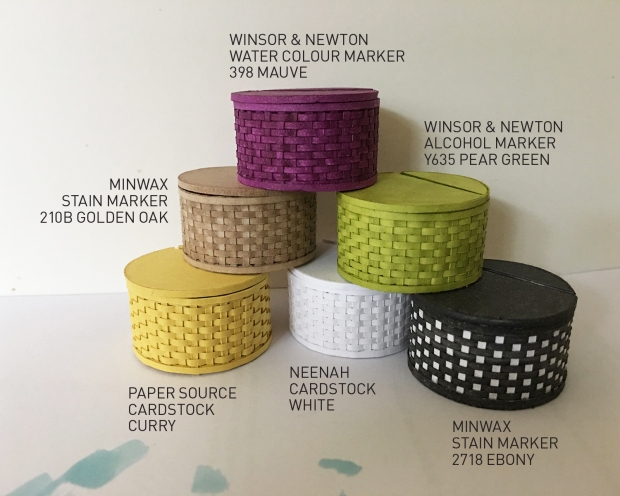
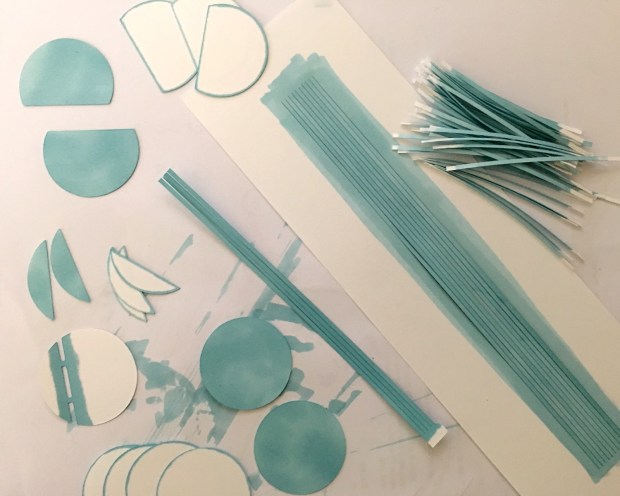
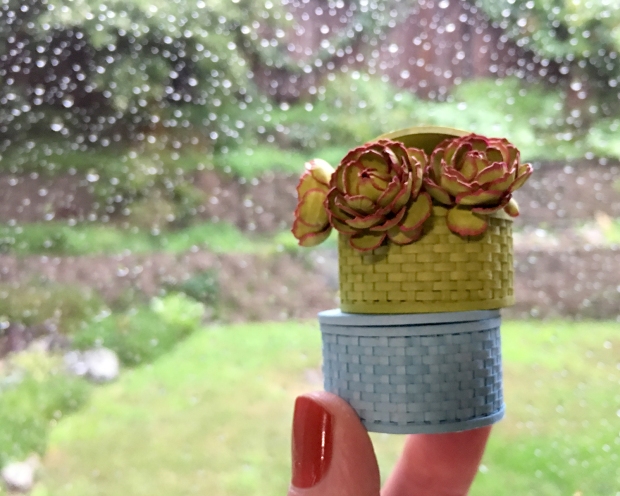
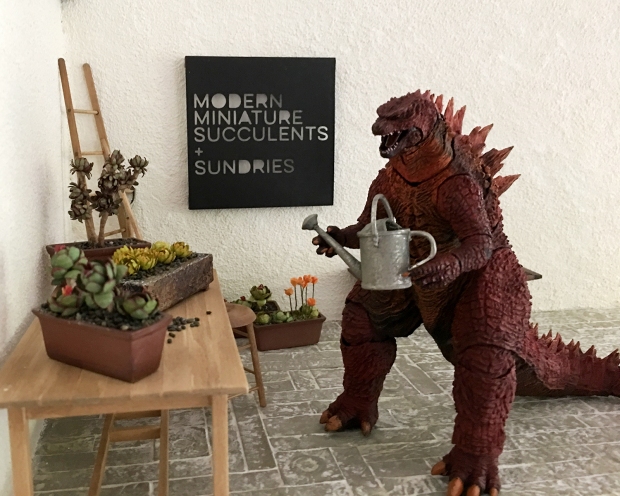
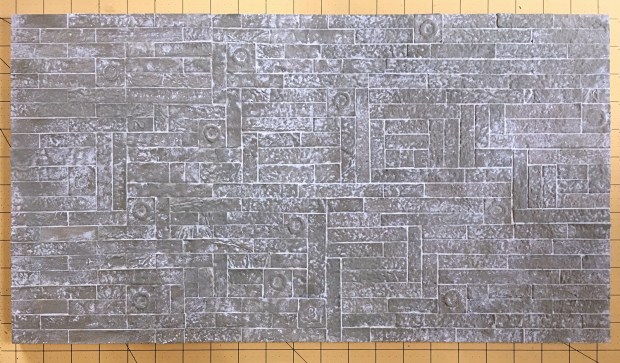
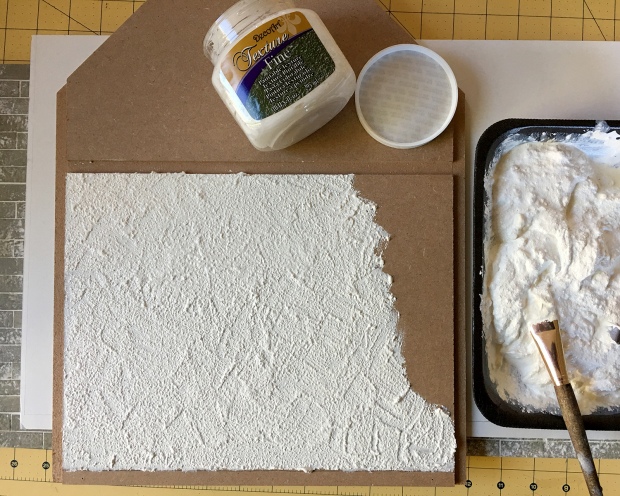
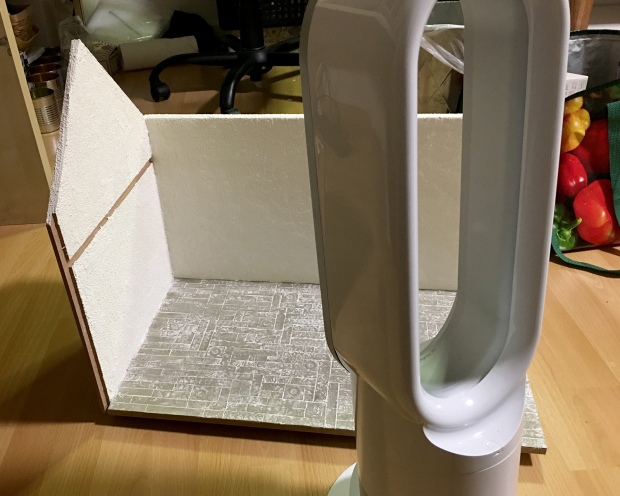
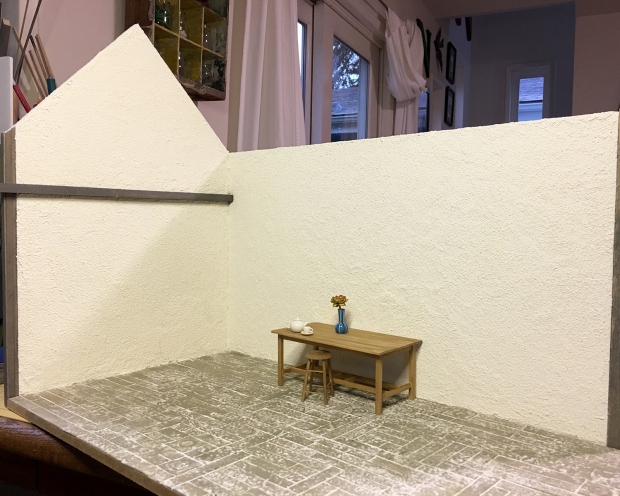
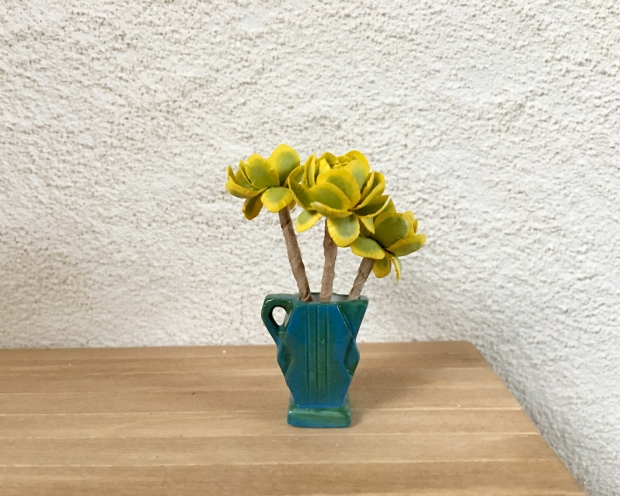
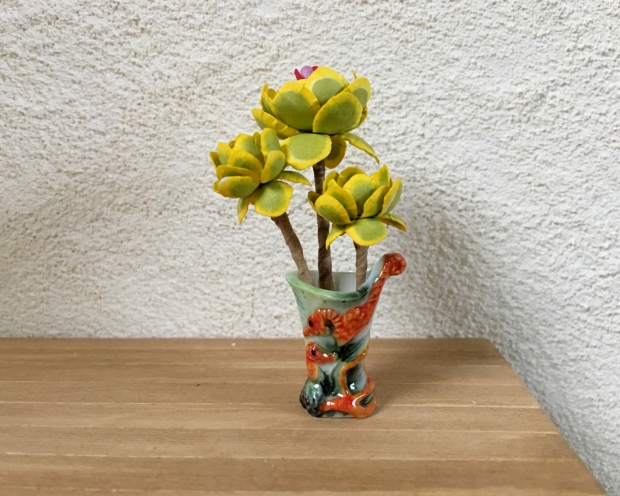
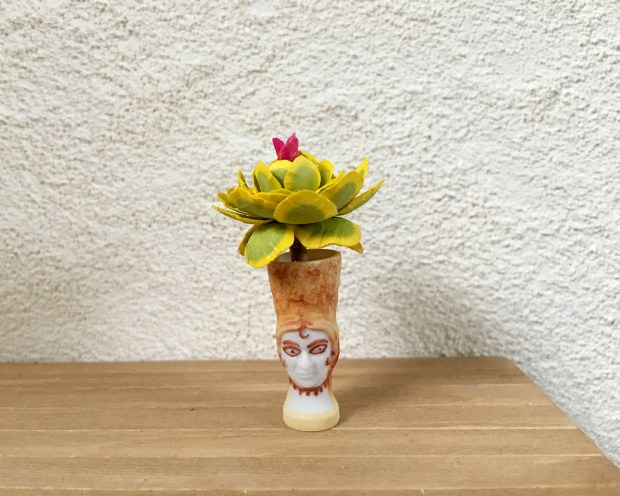

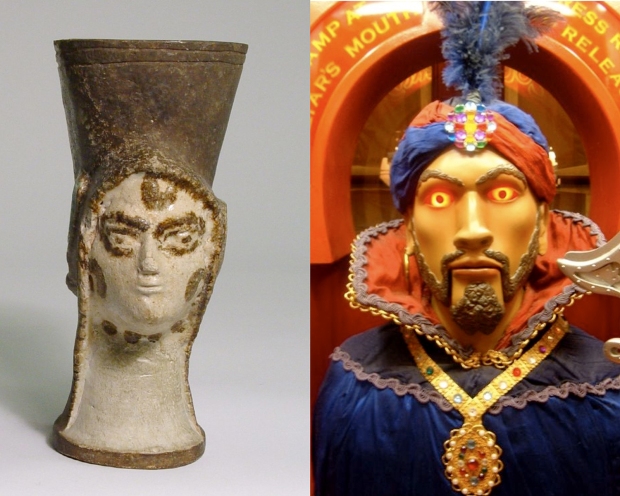
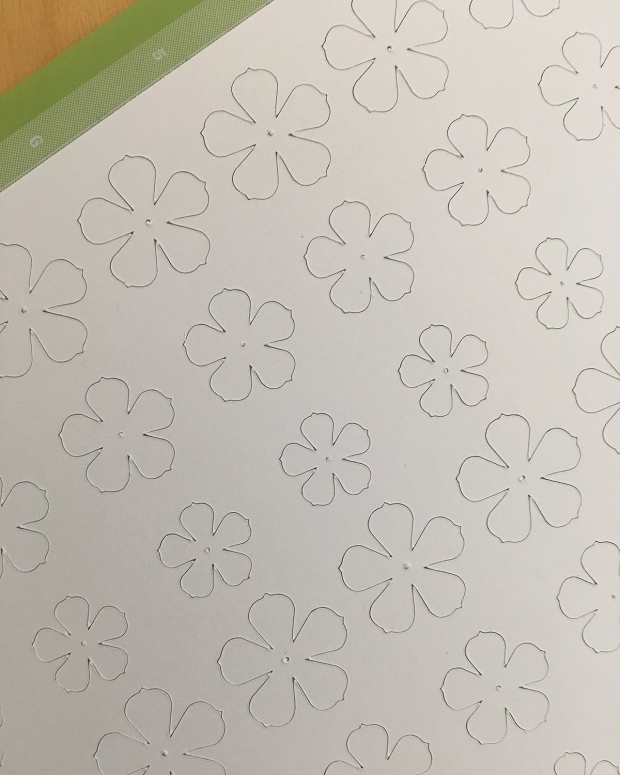
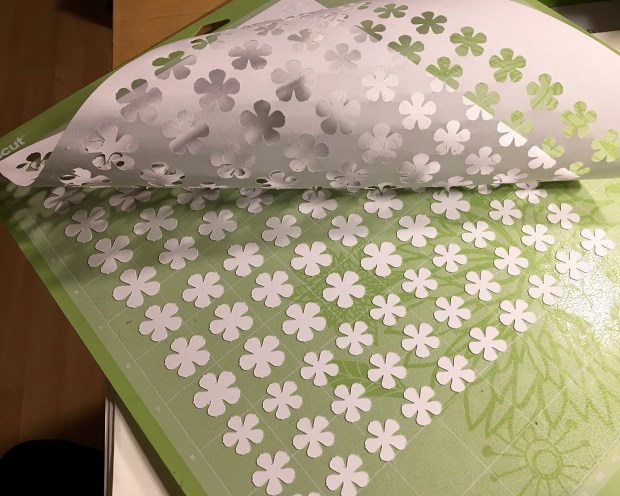
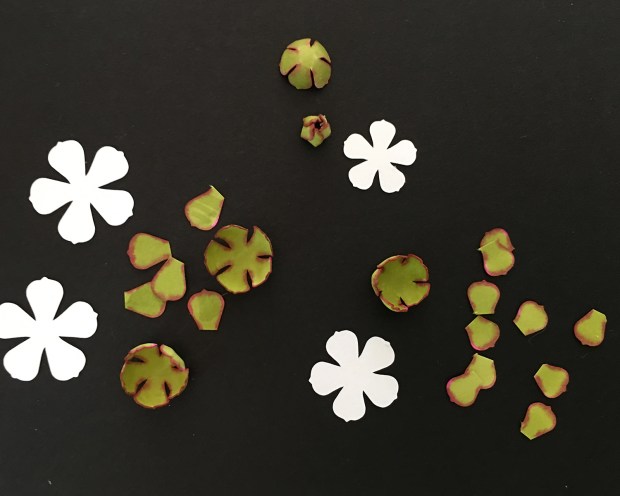
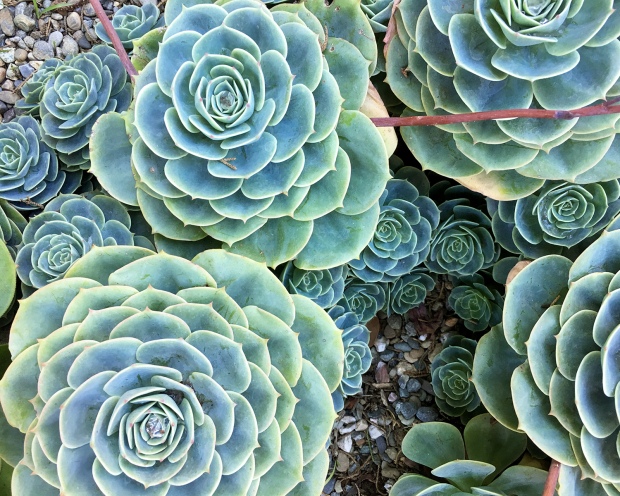
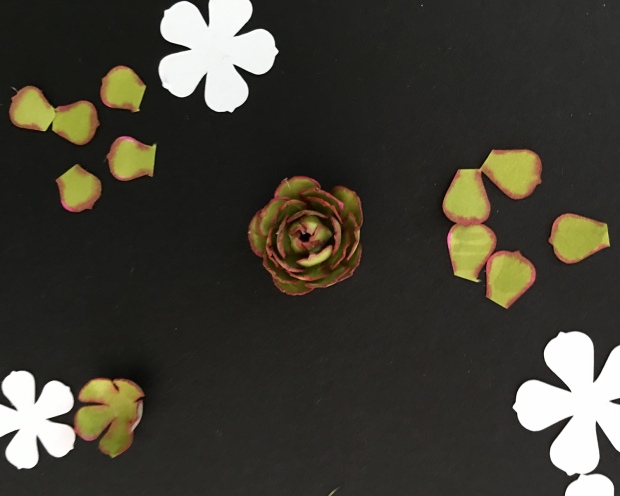
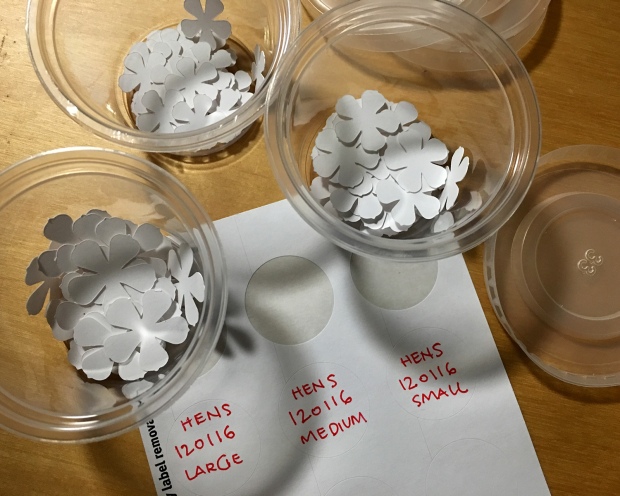
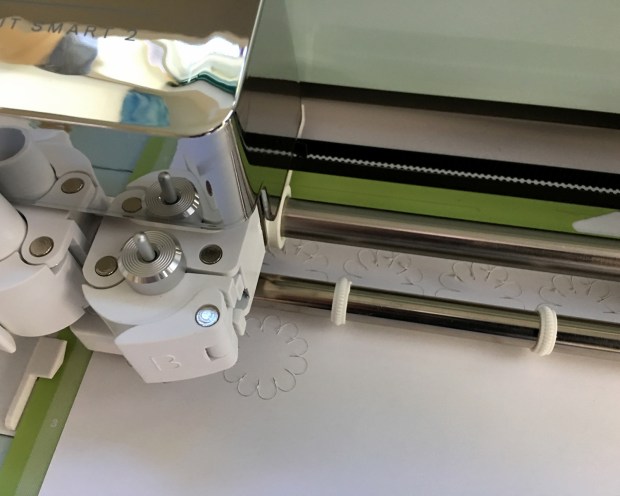
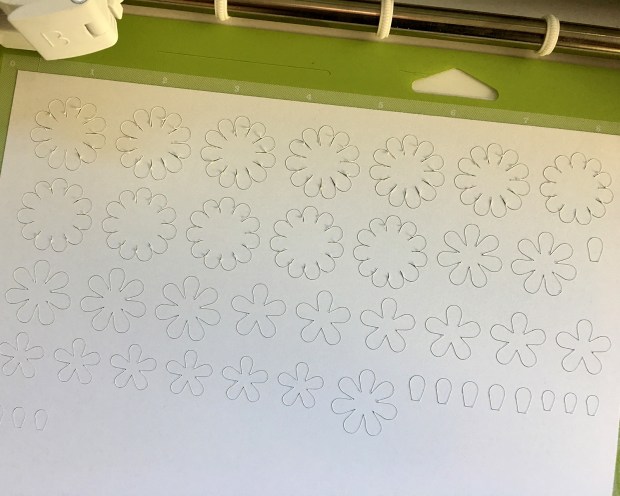
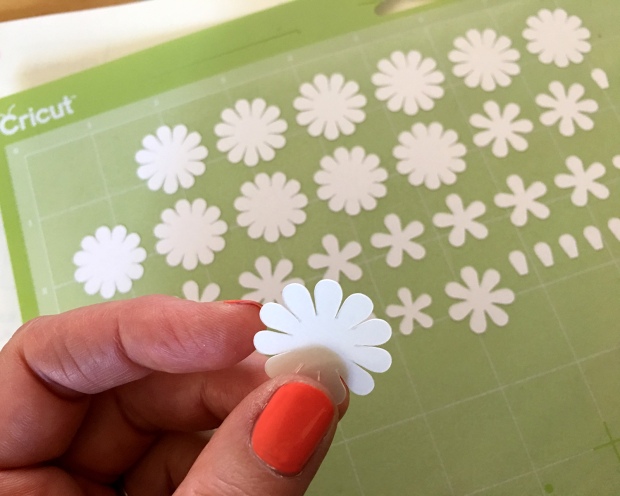
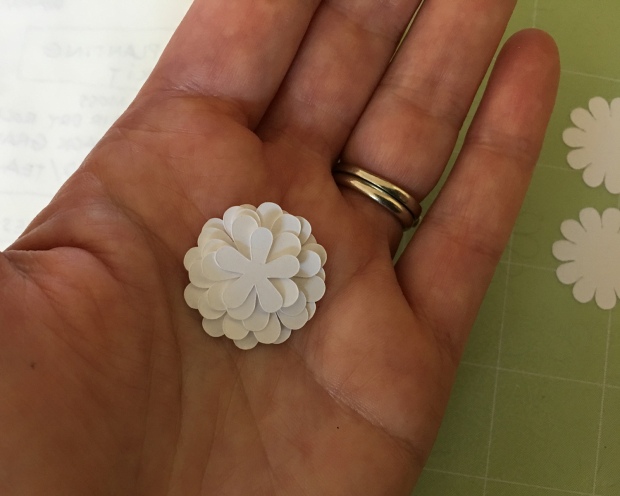
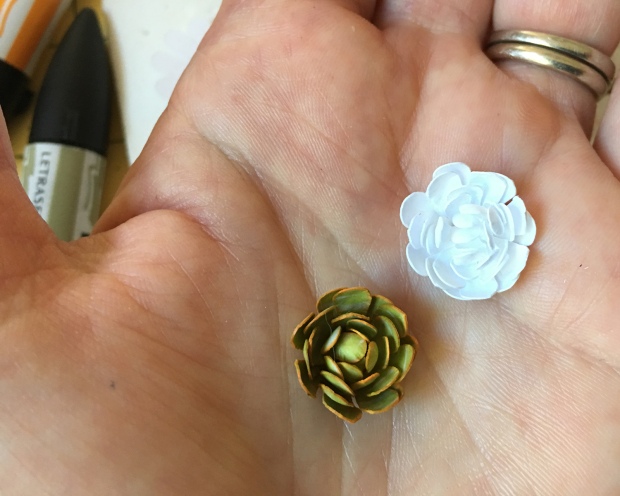
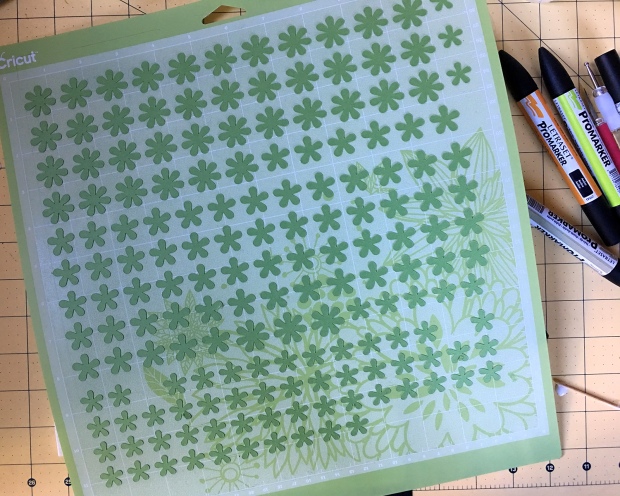
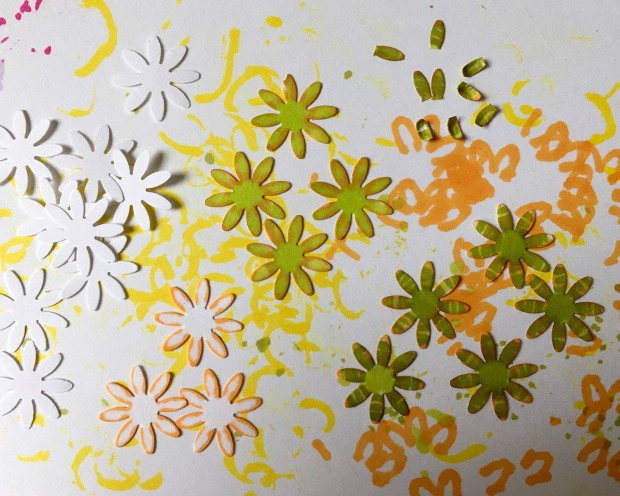 Experimenting with color for a new echeveria kit for
Experimenting with color for a new echeveria kit for 